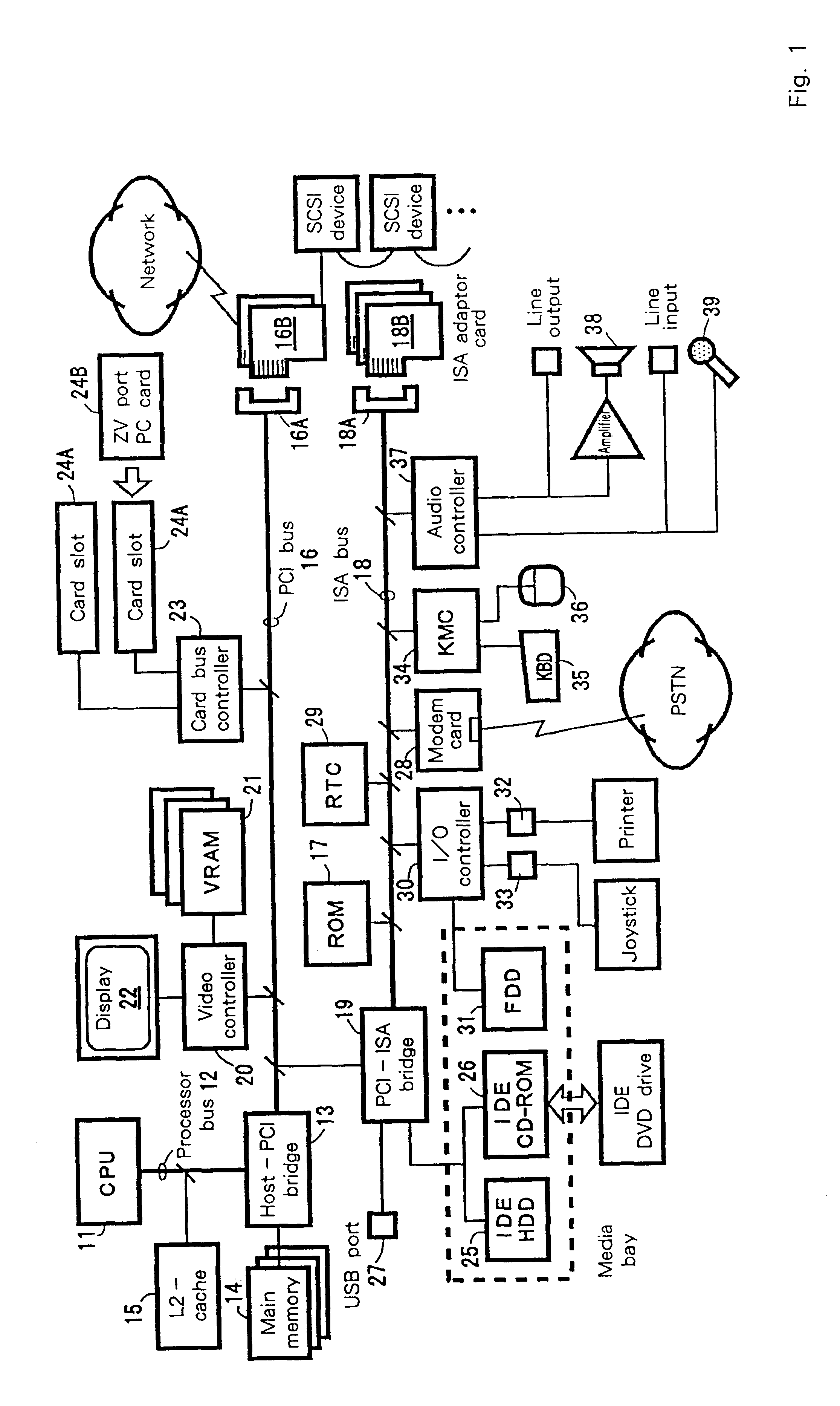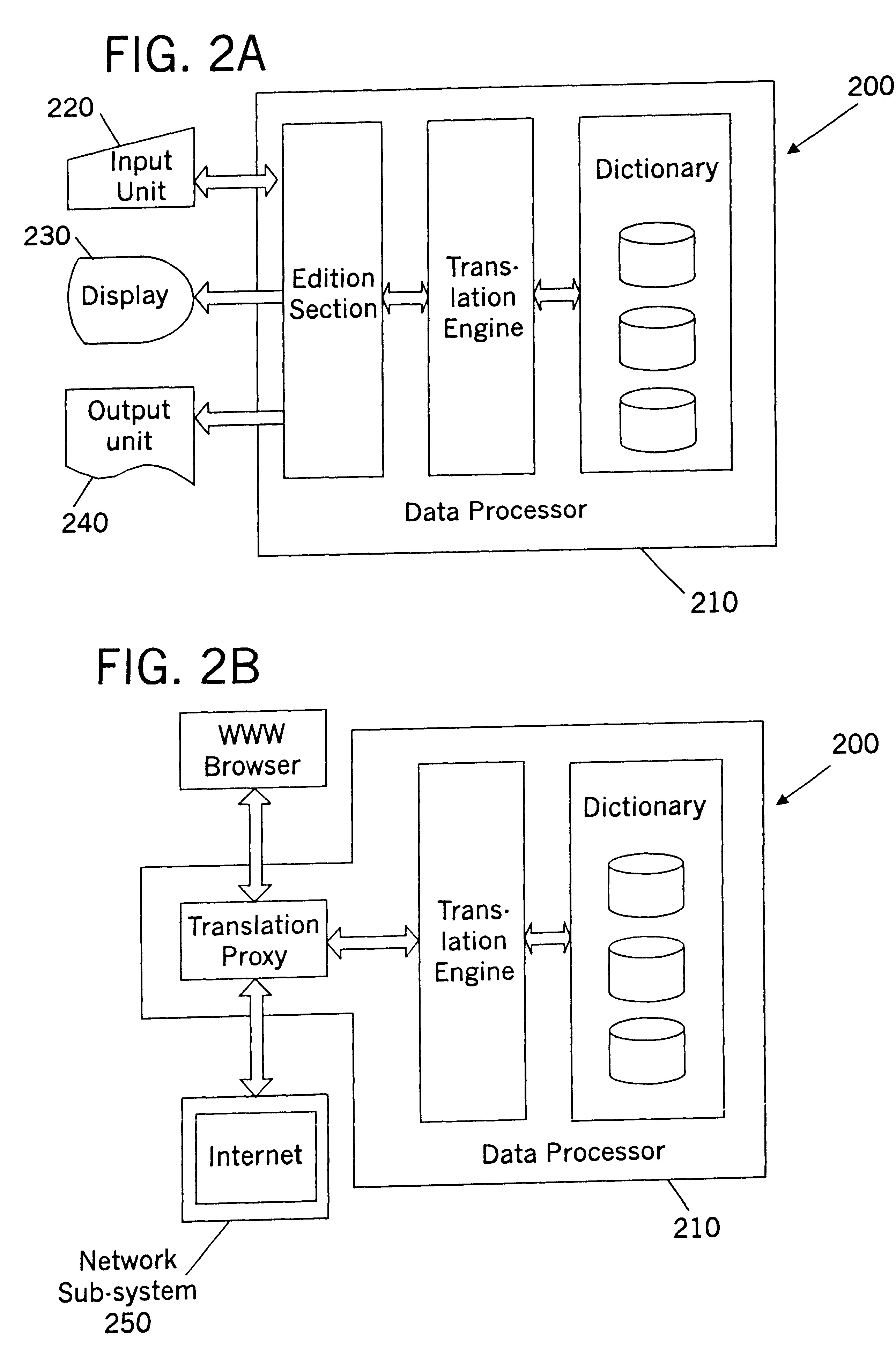Compression method, method for compressing entry word index data for a dictionary, and machine translation system
a technology of entry word index data and compression method, which is applied in the field of compression method and the compression method for a dictionary entry word index data, can solve the problems of deteriorating search efficiency, users cannot fully utilize the new global information system, and the www (the world wide web)
- Summary
- Abstract
- Description
- Claims
- Application Information
AI Technical Summary
Benefits of technology
Problems solved by technology
Method used
Image
Examples
first embodiment
D-1. First embodiment
The first embodiment in this sub-division is a dictionary search process performed using an entry word index that is compressed using the compression method described in detail in sub-division C-1.
FIG. 13 is a flowchart showing the dictionary search processing. The individual steps will now be described.
First, at step S1100 a character string to be searched for is substituted into the variable STR. The character string to be searched for corresponds to a word that is extracted at step S1002 or S1010 and is returned to its base form at step S1006.
An initial value of 1 is substituted into variables I and J, and the length of the character string STR is substituted into variable LEN (step S1102). The variable I is used to designate the Ith character of the original character string STR, and the variable J is used to designate the Jth character of a new character string NEW.
In the IF loop, constituted by the conditional sentence (step S1104), "Is I equal to or small...
second embodiment
D-2. Second embodiment
The second embodiment in this sub-division is a dictionary search process that is performed using an entry word index compressed using the compression method described in detail in sub-division C-2.
FIG. 14 is a flowchart showing the dictionary search processing. The individual steps will now be described.
First, at step S1200 a character string to be searched for is substituted into the variable STR. The character string to be searched for corresponds to a word that is extracted at step S1002 or S1010 and is returned to its base form at step S1006.
At Step 71202, the dictionary entry word index in Table 9 is examined to find a reference entry word that either matches the character string STR or has a greatest matching character count.
The binary search may be employed for this search. The found reference entry word is substituted into a variable CAN as a candidate character string. When there are some reference entry words found that have the same matching charact...
PUM
 Login to View More
Login to View More Abstract
Description
Claims
Application Information
 Login to View More
Login to View More - R&D
- Intellectual Property
- Life Sciences
- Materials
- Tech Scout
- Unparalleled Data Quality
- Higher Quality Content
- 60% Fewer Hallucinations
Browse by: Latest US Patents, China's latest patents, Technical Efficacy Thesaurus, Application Domain, Technology Topic, Popular Technical Reports.
© 2025 PatSnap. All rights reserved.Legal|Privacy policy|Modern Slavery Act Transparency Statement|Sitemap|About US| Contact US: help@patsnap.com



